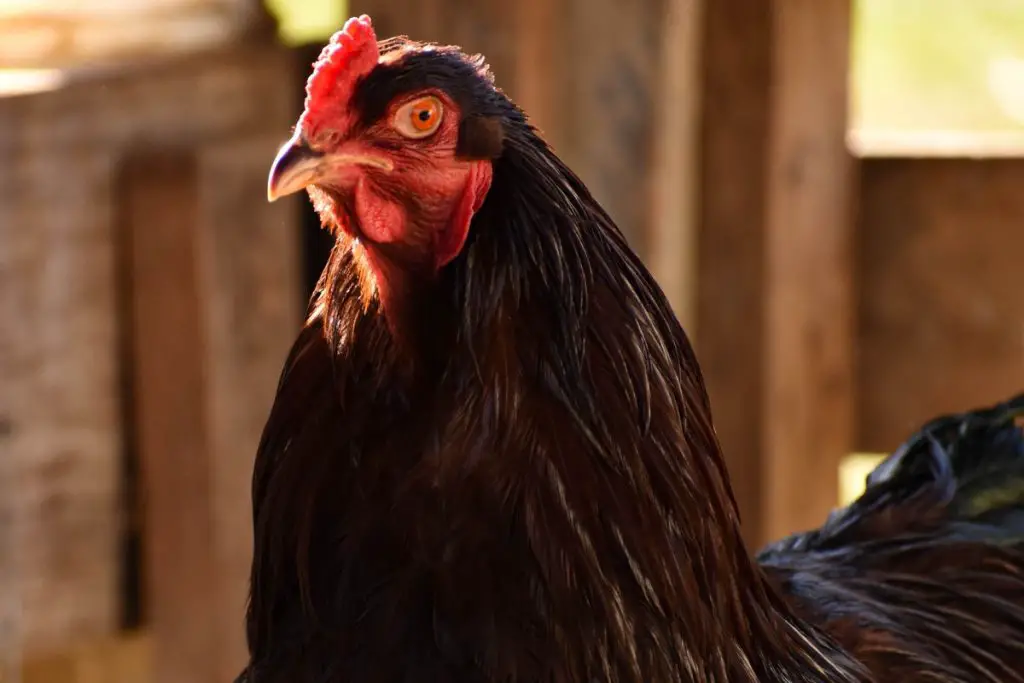When choosing a breed of chicken to keep, the first issue that usually arises is being confronted by the incredible variety of breeds to choose from.
Prioritizing the wants and needs that you have from your livestock is essential for any farm or homestead, so finding the right species is highly important. In this article, we will focus on one type of chicken in particular: The Buckeye.
Table of Contents
What is a Buckeye chicken?
Buckeye chickens are a hearty and popular breed, known best for the quality of their meat and for their egg production. First bred in 1896, the Buckeye was developed by a woman named Nettie Metcalf in her hometown of Warren, Ohio.
Buckeye chickens are famous for being the only American Poultry Association classified breed that was wholly created by a woman. Metcalf was inspired to create a strong and resilient breed that could meet her standards of being good for eating and also great for laying eggs.
Today, Buckeyes are seeing a resurgence in both popularity and population due in part to efforts by The Livestock Conservancy to conserve many of America’s heritage breeds. Because of the recovery project, Buckeyes continue to thrive as a farm and backyard favorite for their many appealing traits.
What does a Buckeye chicken look like?
The deep, dark red coloration of the Buckeye chicken is the most distinctive physical trait of the bird. Most of the feathers are tight together and give the birds a sleek and shiny appearance.

Buckeyes have a stocky and broad build that is often compared to the Cornish chicken, though Metcalf didn’t actually use Cornish when creating the Buckeye. Most of the color is derived from the Buff Cochin breed, which Metcalf initially cross-bred with Barred Plymouth Rocks.
Metcalf then introduced the Black Breasted Red Game Fowl into her breeding strategy, which allowed her to produce a stronger breed of chicken, and also led to Buckeyes having a significantly darker color.
Buckeye chickens also share a similar resemblance to the Rhode Island Red in both color and shape and were even first-named Pea Combed Rhode Island Reds before Metcalf eventually debuted them as Buckeyes at a poultry show in Cleveland, Ohio in 1902.
As the original name suggests, Buckeyes sport a pea comb that sits lower on its head just above the beak. The Buckeye’s body shape and pea comb allow them to be highly resilient to colder weather, as their extremities aren’t very exposed. Buckeyes have yellow shanks, feet, and beaks that beautifully contrast their mahogany feathers.
How long for a buckeye chicken to reach full size?
Within the last century, the growth process of chickens has seen some dramatic shifts regarding the time it takes to raise a chicken from egg to market weight. In 1925, the average market age of a chicken was about 112 days, and the chickens grew to an average weight of 2.5 lbs.
In 2022, chickens are brought to a market weight of 6.46 lbs in just 47 days. These numbers show that chickens now reach maturity in half the time at a size that is twice as large. However, these statistics are mostly reflective of the fact that many of today’s chickens have been genetically bred to yield more meat quickly.
When looking at heritage breeds of livestock, such as the Buckeye chicken, it’s important to understand that these breeds are usually selected to have long and productive lives on a farm. Buckeye chickens are a great example of this, as they usually take about 16 weeks to reach a full size of about 6.5 lbs for hens and about 9 lbs for roosters.
The long time it takes Buckeyes to reach full maturity is demonstrative of them being a slow-growing, heritage breed. Despite taking longer to grow than most commercial farm-raised chickens, Buckeyes usually have a more robust and rich flavored meat by comparison.
Raising a Buckeye chicken to full maturity is proof of the adage that quality takes time, and once Buckeyes have reached full size, both hens and roosters make for excellent cooking poultry.
Buckeye chicken egg color
As stated earlier, Buckeye chickens aren’t just favored for the quality of their meat but are also known for laying wonderful eggs. Buckeye hens lay between 150 and 200 eggs per year, which is comparable to many other heritage breeds of chicken.

The eggs are usually a lighter hue of brown and are considered to be medium-large in size. Averaging 3 to 4 eggs a week is great for a dual-purpose breed, and because Buckeye chickens are resistant to colder climates, they have the potential to continue producing eggs over the winter.
This is a distinct advantage for owning Buckeyes, as many other breeds often stop laying eggs over winter due to being more physically vulnerable.
Buckeye hens usually start laying eggs when they’ve reached between 7-9 months old. This is slightly later than most other dual-purpose breeds which normally start laying eggs after about 6 months.
However, being patient with Buckeye hens is usually worth it, as they will become consistent with laying eggs once they start. Another potentially positive trait of the hens is that they are usually very broody and will take to incubating their eggs easily.
So if you intend on hatching and raising chicks, Buckeyes will be a perfect match. However, if you don’t intend on breeding many chicks, a hen’s broodiness can be broken by taking the necessary measures.
Closing Thoughts
Overall, Buckeye chickens are usually seen as an excellent addition to any farm or homestead. They are providers of both quality eggs and delicious meat and are adaptable to many climates.
Having a reasonable and often docile temperament, Buckeyes are friendly and easy to handle birds that will also get along well with other farm animals.
Whether you’re an experienced farmer or someone who is just getting started, Buckeye chickens will perfectly fill their role for anyone looking to care for livestock.

